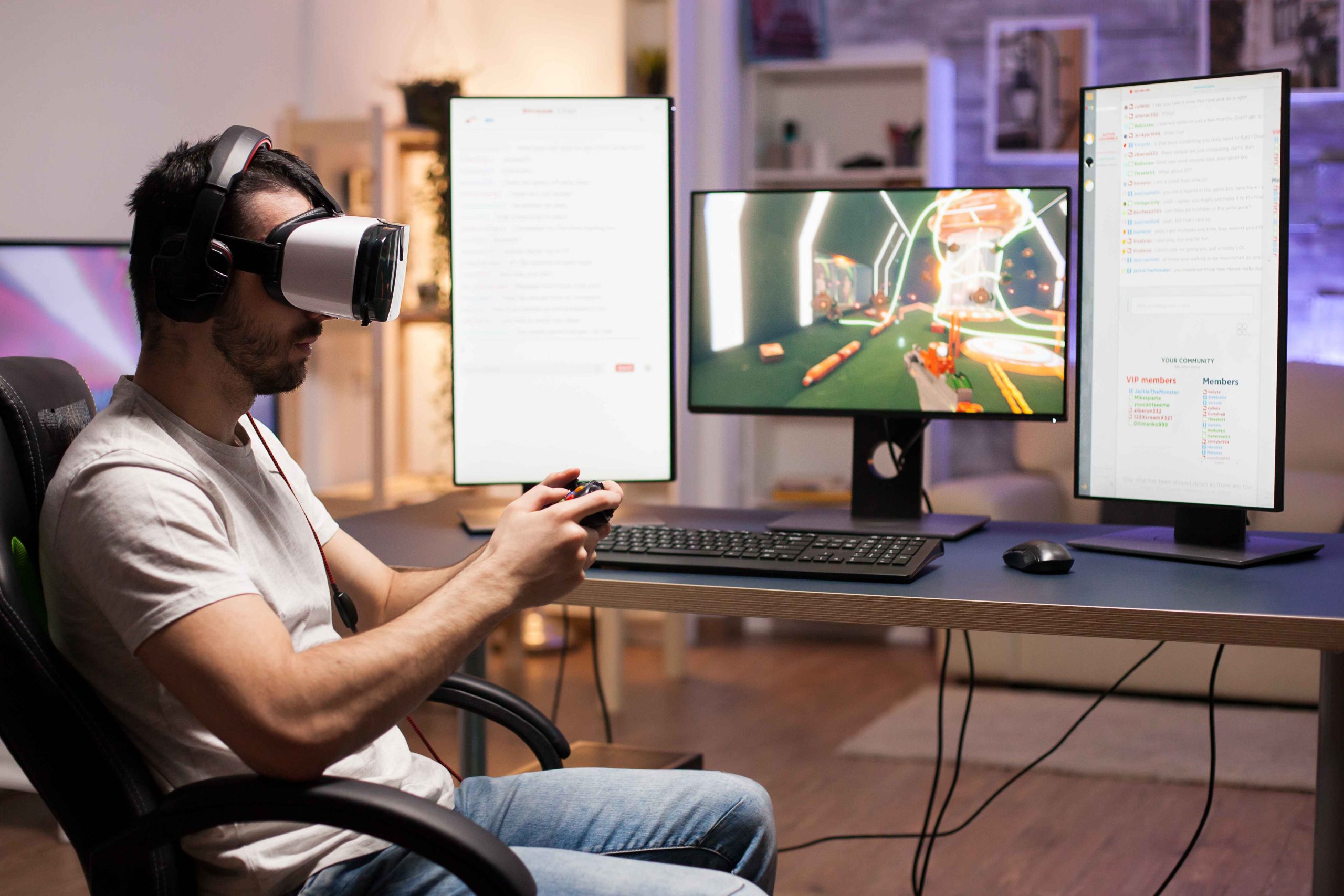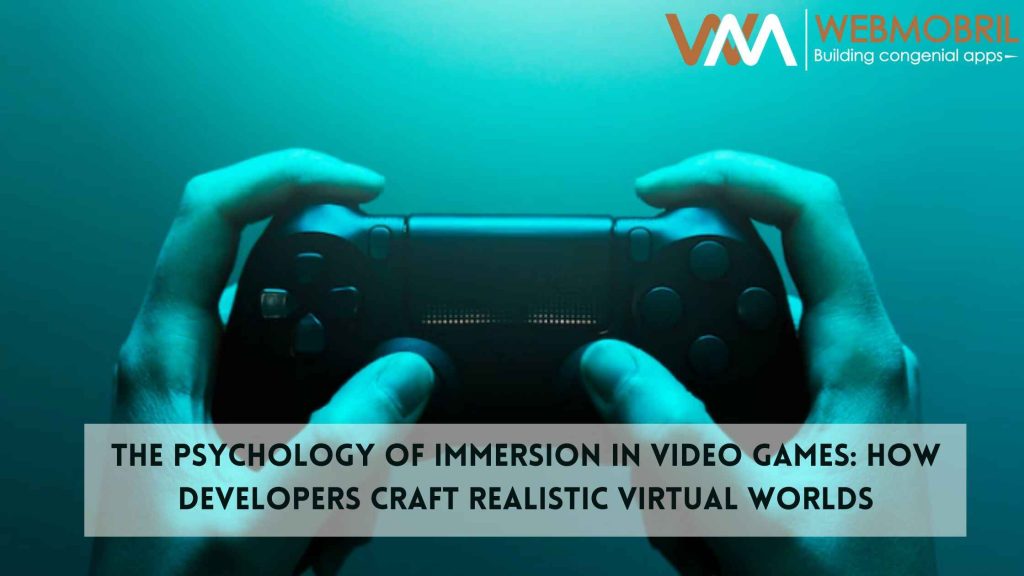Immersive is a word tossed around by gamers a lot when defining their favorite games. But what does immersive really mean?
As per the Oxford dictionary, the word immersive means “(of a computer display or system) generating a three-dimensional image which appears to surround the user.”
In the gaming landscape, it translates to creating an atmosphere for players that is realistic. Graphics, gameplay, story, sound and interface are some of the factors that can influence the level of immersion in video games.
It means that players are not only playing the game they are fully absorbed in the game world. Let us dwell deeper into the psychology of immersion in video games and game development.

Types of Immersive Experiences
Immersion can be of different types such as spatial immersion where players feel they are actually part of the game world and explore and interact with the environment. Graphics, sound and design are key elements of spatial immersion.
Then there is narrative immersion where players feel as if they are part of the game’s story where they can relate to the characters and events. Plot and dialogues are crucial to create narrative immersion in a game.
Players can also feel immersed in the game’s mechanics, it is majorly defined by the difficulty, rewards, and feedback.
Audio Immersion
Sound effects can engage a player and draw him into the game world. Creating a realistic yet unique sound environment can make players feel as if they are part of the game. Background music sets the tone of the game and influences the emotion and attention of players. It can be adapted and changed to the game state of difficulty level.
Technology plays a vital role in enhancing the audio immersion in video games. Spatial sound delivered through headphones or speakers can also create a sense of realism in the game world.
Graphic Immersion
The quality and details of the graphics such as animations, lighting, textures and reflections can create a sense of realism in the game world. Art styles such as color palette, shapes and theme create an aesthetic and creative impression on the players.
The ghost of Tsushima, Death Stranding, and Red Dead Redemption 2 are some examples of games with immersive graphics. The high-quality visuals and realistic visuals of these popular titles create a sense of realism.

Storytelling
Storytelling is a key element that can draw players into the virtual world. If players relate to the story and characters, they can get easily immersed in the game and feel a part of it. Creating relatable characters and dialogues can bring a game’s story to life.
The Last of Us, BioShock, and Red Dear Redemption are some games with great storytelling. Each of the games explores different genres but has been able to captivate players and make them invested in the characters and the plot of the game.
Gameplay Mechanics
The gameplay mechanics are also crucial in video games to create an immersive experience. It involves aspects related to game design and rules the players follow. Gameplay mechanism also dictates the way players act within the game, their actions, and interactions. The gameplay mechanism involves different aspects such as customization, interaction, discovery and escapism.
Allowing players to customize the appearance and equipment can create a sense of ownership and make them more invested in the game world. Players can also interact with objects and characters to create a sense of involvement.
There are many more gameplay mechanics that can create an immersive effect on the players and make them feel immersed in the game.
Also read: Unity Game Engine: The Effective Technology for Easy & Quick Game Development
Conclusion:
These are some factors that influence the level of immersion in video games. Graphics, sound, storyline, and gameplay mechanics are the key elements of game development to create an immersive experience. Creating a realistic virtual world requires a lot of creativity and skill.
Game Developers use various tools and techniques to create an immersive experience for users. With the latest technologies such as AR and VR development, the focus on creating an immersive experience is much more.

